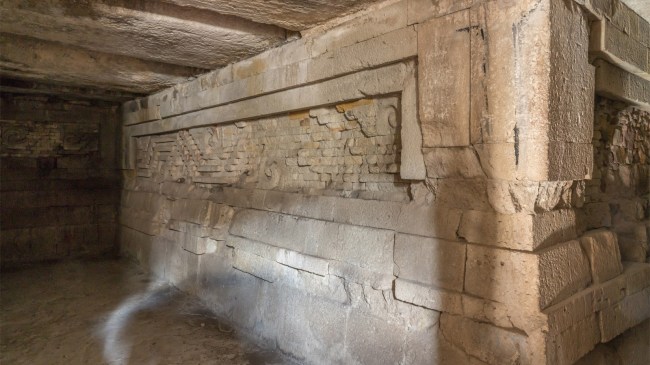Getty Image
Archaeologists have discovered the ruins of the ancient city of Mitla in southern Mexico that contain what a priest once called the “back door of Hell.”
Mitla, which means place of the dead, was located in what is now Oaxaca. According to the Daily Mail, was known for its association with Pitao Bezelao, the Zapotec god of death.
In the 16th century, Spaniards razed the city and built a church directly over the ruins of Mitla’s most important temple, burying a labyrinth of tunnels and caverns believed to be the “entrance to the underworld.”
“The Zapotecs believed the caves and the subterranean labyrinth under Mitla to be an entrance to the underworld, or Lyobaa,” explained Marco Vigato, founder of the ARX Project, which calls itself “a group of researchers from different academic fields and nationalities, linked by a common passion for the ancient world and by the belief in the need for a multidisciplinary approach to the interpretation of ancient sites.”
“For this reason, Mitla was the center of the cult of Pitao Bezelao, the Zapotec god of death and the underworld, and was for centuries the cemetery of the Zapotec kings and high priests.”
Until recently, archaeological excavations were unable to locate the caverns and tunnels of Mitla.
Now, however, archaeologists were able to use non-invasive techniques, such as ground penetrating radar, electric resistivity tomography, and seismic noise tomography, to probe five different sets of ruins.
“Some of the tunnels and chambers extend to a considerable depth, in excess of 15 meters,” said Vigato.
“In the case of the south group, they’re up to 30 meters deep – this is as far as the instruments can penetrate. One chamber under the Church of San Pablo Apostol measures approximately 15 meters long by 10 meters wide.
“It is possible that the tunnels, particularly those under the church group, extend further to the north, east and south.
“Possibly they connect to other geophysical anomalies identified under the other groups.”
Vigato says one of the caverns contains a burial chamber for the Zapotec high priests, while another chamber holds a “dark and gruesome room” where “they threw the bodies of the victims of the great lords and chieftains who had fallen in battle.”
The next step will involve typical archaeological methods to determine if the Zapotec kings “richly dressed in their best attire” with “feathers, jewels, golden necklaces, and precious stones” are interred there.

